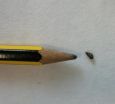(Press-News.org) UCSF researchers found that poor HIV-infected individuals living in San Francisco are significantly more likely to visit emergency rooms and to have hospital stays if they lack access to food of sufficient quality and quantity for a healthy life.
"In the prior three months, a quarter of participants in the study reported an ER visit, and just over a tenth reported a hospitalization, which shows that we are dealing with a population with high levels of illness. But the food insecure people were even sicker than the food secure, which is consistent with their experiencing higher rates of chronic diseases," said the study's primary investigator, Sheri Weiser, MD, assistant professor of medicine in the UCSF HIV/AIDS Division at San Francisco General Hospital and Trauma Center.
The findings are published online on August 22, 2012 in the Journal of General Internal Medicine.
The study recruited 347 HIV-infected urban poor participants living in substandard housing in San Francisco. To determine levels of food insecurity, the participants were questioned about their anxiety and uncertainty about their food supply, whether they were able to access sufficient quality and variety of food, and their experience of insufficient food intake and the physical consequences. Just over half of the group, 56 percent, was classified as food insecure. The entire cohort of food secure and food insecure individuals was followed for two years, looking at healthcare utilization as a primary outcome.
"Compared to food secure participants, the odds were approximately two times higher that a food insecure participant was hospitalized or that a food insecure participant had visited the ER over the study's time period," said Weiser. "For a long time we have known that adequate nutrition is crucial for HIV-positive patients to live long healthy lives. Our findings that food insecure individuals are also more likely to use costly services from hospitals and emergency rooms build on our previous work showing that food insecure individuals experience poorer HIV treatment outcomes."
Food insecurity among HIV-infected homeless and marginally housed individuals in the City is higher than the rate of food insecurity seen nationally in non HIV-infected homeless persons, with about a quarter to a third experiencing food insecurity. For the general population, about one in seven Americans is food insecure.
"Roughly three quarters of our participants are accessing some form of food aid. Project Open Hand, Glide, and other programs providing food assistance to San Francisco's urban poor do a phenomenal job, but with falling levels of funding and increasing client loads, their efforts have not been enough to take people out of food insecurity," said the study's senior investigator, Margot B. Kushel, MD, associate professor in the UCSF Division of Internal Medicine at San Francisco General Hospital and Trauma Center.
"One part of the problem lies in housing," she said. "While about a tenth of participants had a recent experience of homelessness, most of the rest were housed in single-room occupancy hotels, many of which do not include kitchen facilities. Providing secure housing with functional kitchens is an important part of addressing the problem."
Surprisingly, said Weiser, less than a fifth of the participants had received federal food assistance through the Supplemental Nutrition Assistance Programs (SNAP) over the previous year and only about a tenth had received SNAP over the previous month. "We were alarmed to see such low numbers accessing SNAP, since presumably this program is intended to serve urban poor who experience food insecurity. But many of our food insecure participants have a monthly income that is slightly above the $1,080 a month SNAP cut-off." In other words, SNAP does not seem to be reaching the majority of HIV-infected persons in need of food assistance.
"Given the costs to the system from increased ER and hospital use, one approach might be to increase uptake of SNAP. Part of the problem may be that individuals are not able to complete the enrollment procedures. It seems that eligibility levels might be set too high—the amount of money that might disqualify one from SNAP may not be enough to ensure adequate nutrition. . After deducting rent for a SRO room, there is not much left to buy quality, nutritious food that requires little or no preparation," said Kushel.
###Co-authors include Abigail M. Hatcher, David Guzman and Elise D. Riley from UCSF, Edward A. Frongillo from the University of South Carolina and David R. Bangsberg from the Massachusetts General Hospital Center for Global Health.
Funding for the research was provided by the National Institute of Mental Health, the California HIV/AIDS Research Program of the University of California, the UCSF Academic Senate, Hurlbut-Johnson funds from the UCSF AIDS Research Institute award, the Burke Family Foundation, the Hellman Family Foundation, and the National Center for Research Resources, a component of the National Institutes of Health.
The UCSF Division of HIV/AIDS at San Francisco General Hospital and Trauma Center is affiliated with the AIDS Research Institute (ARI) at UCSF. UCSF ARI houses hundreds of scientists and dozens of programs throughout UCSF and affiliated labs and institutions, making ARI one of the largest AIDS research entities in the world.
UCSF is a leading university dedicated to advancing health worldwide through advanced biomedical research, graduate level education in the life sciences and health professions, and excellence in patient care.
Lack of food increases hospital use by HIV-infected urban poor in SF
UCSF researchers found that poor HIV-infected individuals living in San Francisco are significantly more likely to visit emergency rooms and to have hospital stays if they lack access to food of sufficient quality and quantity for a healthy life
2012-08-22
ELSE PRESS RELEASES FROM THIS DATE:
Green tea compound shows promise for tackling cancer
2012-08-22
A compound found in green tea could be a weapon in treatments for tackling cancer, according to newly-published research at the University of Strathclyde in Glasgow, Scotland.
The extract, known as epigallocatechin gallate, has been known to have preventative anti-cancer properties but fails to reach tumours when delivered by conventional intravenous administration.
However, in initial laboratory tests at the Universities of Strathclyde and Glasgow, researchers used an approach which allowed the treatment to be delivered specifically to the tumours after intravenous ...
Glass offers improved means of storing UK's nuclear waste
2012-08-22
ILW makes up more than three quarters of the volume of material destined for geological disposal in the UK. (1)
Currently the UK's preferred method is to encapsulate ILW in specially formulated cement. The waste is mixed with cement and sealed in steel drums, in preparation for disposal deep underground.
Two studies, published in the latest issues of The Journal of Nuclear Materials and European Journal of Glass Science and Technology A show that turning this kind of waste into glass, a process called vitrification, could be a better method for its long-term storage, ...
Losing stream in our battle to predict and prevent invasive species
2012-08-22
Invasive species – plants, animals, and microbes introduced to regions beyond their native range – carry a global price tag of $1.4 trillion dollars. They are responsible for the loss of natural resources and biodiversity, damages to infrastructure, and an uptick in infectious diseases.
Not all non-native species pose a threat. Scientists around the world have spent the last several decades teasing apart the conditions that set the stage for debilitating invaders, like giant hogweed, zebra mussels, or gray squirrels. A number of hypotheses have emerged to help predict ...
Survival without water: A key trait of an aquatic invader to spread
2012-08-22
Nowadays, an increasing number of rivers and lakes are being invaded by exotic snails, which come from remote regions, and even other continents. Such species represent a threat to native species, as they compete for food or space with them.
This is the case of the mudsnail Potamopyrgus antipodarum. This small aquatic snail is native to New Zealand, and has spread throughout rivers, lakes or streams in Europe, Australia, America and Asia. The invasion success of this mudsnail may be partly due to the ability of females to reproduce without participation of males (i.e. ...
Scientists quantify nanofiber health risk to workers
2012-08-22
Health risks posed to people who work with tiny fibres used in manufacturing industries could be reduced, thanks to new research.
Research into the health risks posed by nanofibres – used to strengthen objects from tennis rackets to airplane wings – has pinpointed the lengths at which these fibres are harmful to the lungs.
Nanofibres, which can be made from a range of materials including carbon, are about 1,000 times smaller than the width of a human hair and can reach the lung cavity when inhaled.
This may lead to a cancer known as mesothelioma, which is known to ...
Thinking about kids? Man, you gotta shed the kilos
2012-08-22
Australian scientists studying the impact obesity has on pregnancy, are urging men to get 'match fit' before conceiving to assist with fetal development.
Reproductive experts from the University of Melbourne's Department of Zoology have discovered that a father's obesity negatively impacts sperm, resulting in smaller fetuses, poor pregnancy success and reduced placental development.
While the health risks surrounding obesity and pregnancy have largely been centred on overweight mothers, scientists from the University of Melbourne are putting the onus on men to shape ...
How to act if there is a fire on the AVE
2012-08-22
Researchers at the University of Cantabria have used computer models to analyse the best way to evacuate the Spanish High Speed Train, AVE, in the case of fire. The involvement of the crew in organising the fast transfer of passengers, completing the process before the train comes to a halt and collective collaboration to assist those with reduced mobility are just some of the strategies to be followed.
"In the event of fire on an AVE, two stages should be defined: the first is pre-evacuation in which passengers are transferred from one coach to another while the train ...
Male mice exposed to chronic social stress have anxious female offspring
2012-08-22
BOSTON (August 22, 2012) —A study in mice conducted by researchers at Tufts University School of Medicine (TUSM) suggests that a woman's risk of anxiety and dysfunctional social behavior may depend on the experiences of her parents, particularly fathers, when they were young. The study, published online in Biological Psychiatry, suggests that stress caused by chronic social instability during youth contributes to epigenetic changes in sperm cells that can lead to psychiatric disorders in female offspring across multiple generations.
"The long-term effects of stress can ...
MR enterography is option for pediatric patients with Crohn disease
2012-08-22
Parents with children nine years old and older who have Crohn disease should ask their children's doctor about MR enterography as a replacement for small bowel x-rays or CT enterography, a new study indicates.
Children with inflammatory bowel disease must often undergo repeated examinations, which, with x-rays and CT, could lead to significant radiation exposure, said William A. Faubion, Jr., MD, one of the authors of the study.
"MR enterography does not require any radiation, however the patient does have to drink an oral contrast agent, must hold their breath at times ...
Johns Hopkins researchers return blood cells to stem cell state
2012-08-22
Johns Hopkins scientists have developed a reliable method to turn the clock back on blood cells, restoring them to a primitive stem cell state from which they can then develop into any other type of cell in the body.
The work, described in the Aug. 8 issue of the journal Public Library of Science (PLoS), is "Chapter Two" in an ongoing effort to efficiently and consistently convert adult blood cells into stem cells that are highly qualified for clinical and research use in place of human embryonic stem cells, says Elias Zambidis, M.D., Ph.D., assistant professor of oncology ...
LAST 30 PRESS RELEASES:
The perfect plastic? Plant-based, fully saltwater degradable, zero microplastics
Bias in data may be blocking AI’s potential to combat antibiotic resistance
Article-level metrics would provide more recognition to most researchers than journal-level metrics
Satiety’s little helper: Protein that supports appetite regulating protein identified
UF dives deep into predicting storm damage with computer models
A stormy ocean voyage yields insights on the global carbon cycle
Scientists identify first non-coding gene that controls cell size
Demonstration of altermagnetism in RuO₂ thin films -- A new magnetic material for the AI era
Penn researchers awarded $25M to conduct trial using smartphones to fight heart disease
PCORI awards funding for new patient-centered healthcare research
Exploring the origins of the universe: 145 low-noise amplifiers complete ALMA telescopes
Empress cicada wings help illuminate molecular structure
Using sound waves to detect helium
Time burden in patients with metastatic breast and ovarian cancer from clinic and home demands
Researchers discover bias in AI models that analyze pathology samples
Scientists ID potential way to prevent brain injuries from triggering Alzheimer's
MASTER 2nd Open Call: Execution period kick-off
Algae for health in food and pharma
Advanced microrobots driven by acoustic and magnetic fields for biomedical applications
Chicago health information leader recognized for raising CPR readiness and blood pressure awareness
The Intimate Animal, a new book from Kinsey Institute Executive Director Dr. Justin Garcia
When blue-collar workers lose union protection, they try self-employment
New video dataset to advance AI for health care
MEA-based graph deviation network for early autism syndrome signatures in human forebrain organoids
New modeling approach sheds light on rare gut disease
Study documents potentially hazardous flame retardants in firefighter gear
Can certain bacteria regulate aging of the immune system and its related alterations?
AI model helps diagnose often undetected heart disease from simple EKG
There are fewer online trolls than people think
Cell membrane fluctuations produce electricity
[Press-News.org] Lack of food increases hospital use by HIV-infected urban poor in SFUCSF researchers found that poor HIV-infected individuals living in San Francisco are significantly more likely to visit emergency rooms and to have hospital stays if they lack access to food of sufficient quality and quantity for a healthy life



